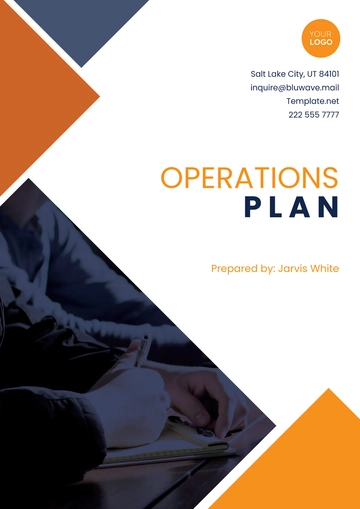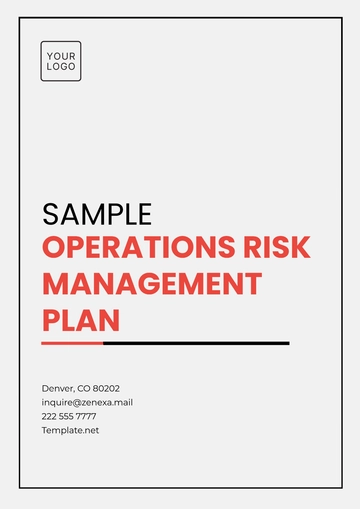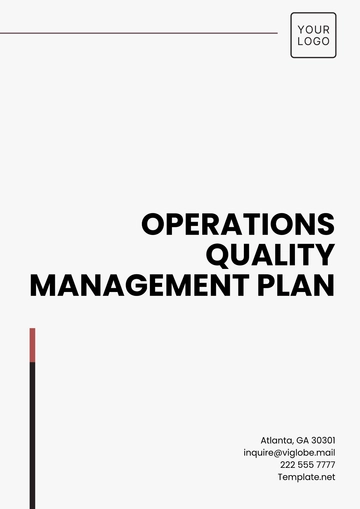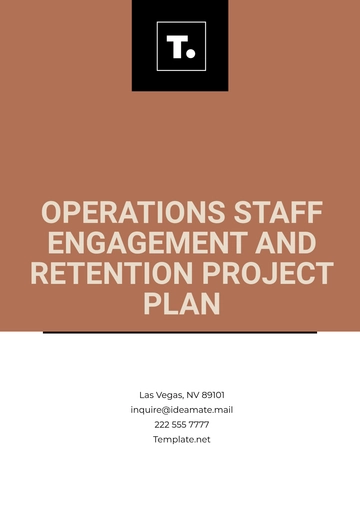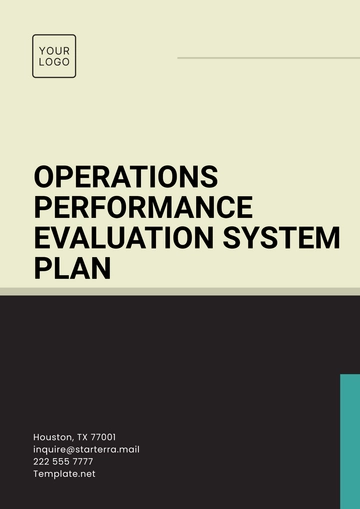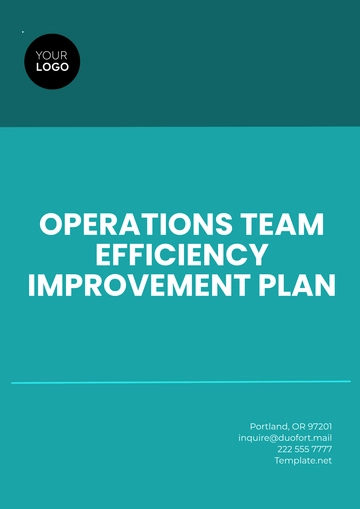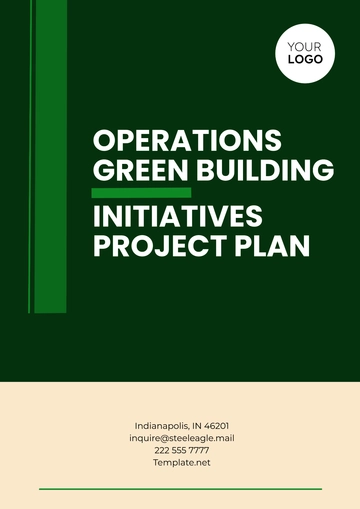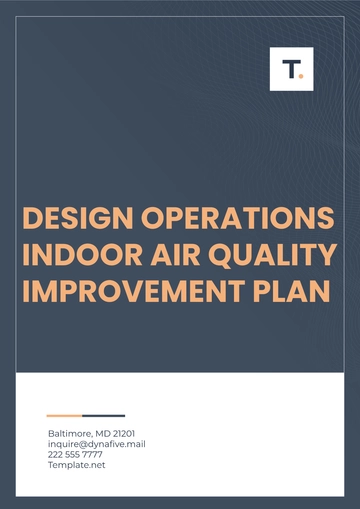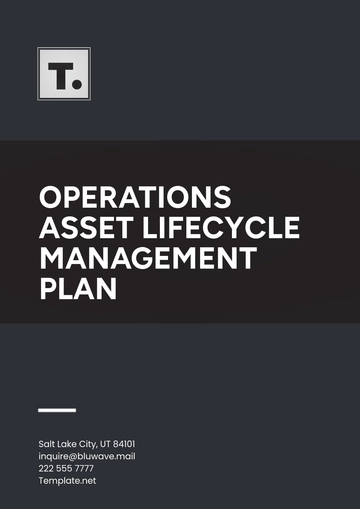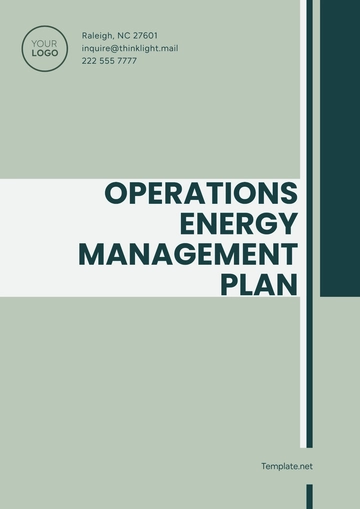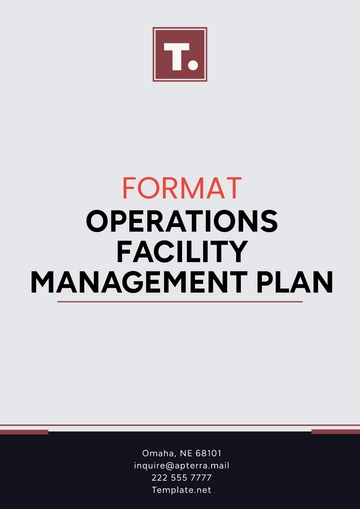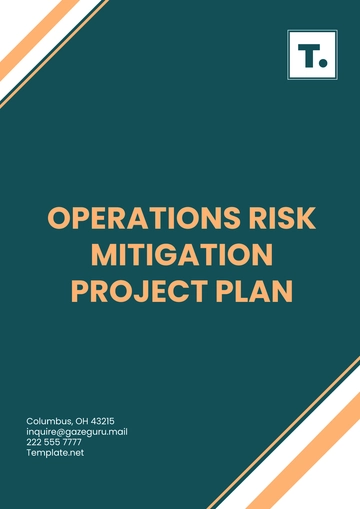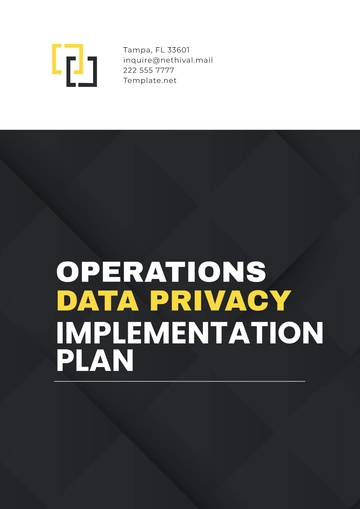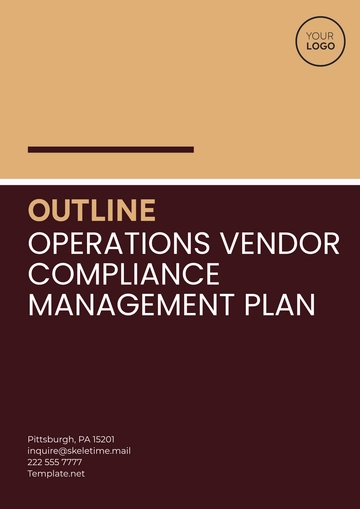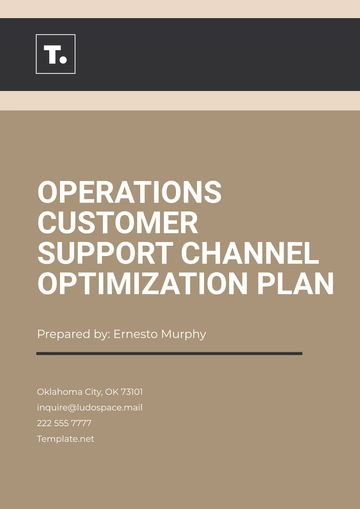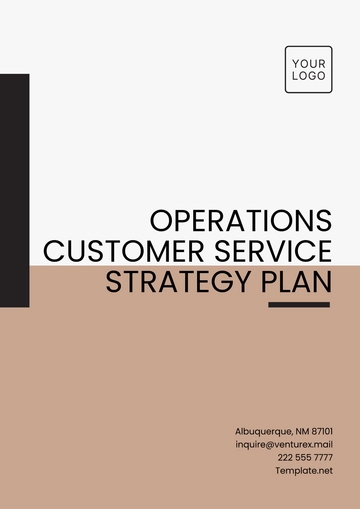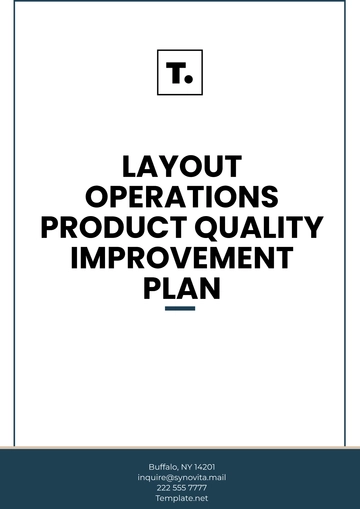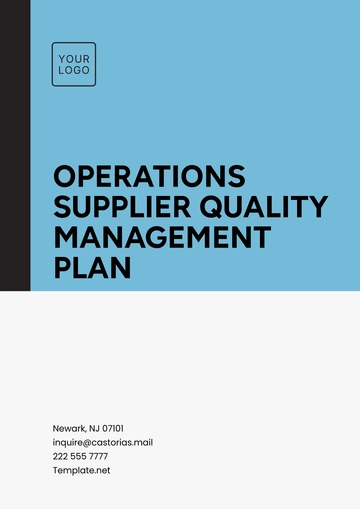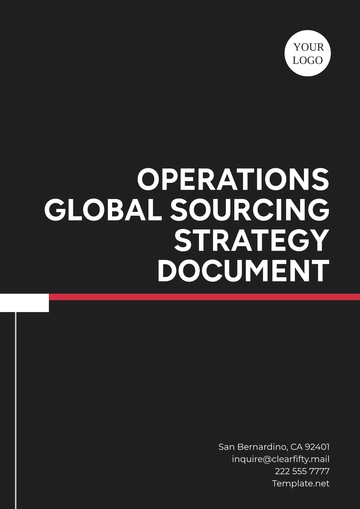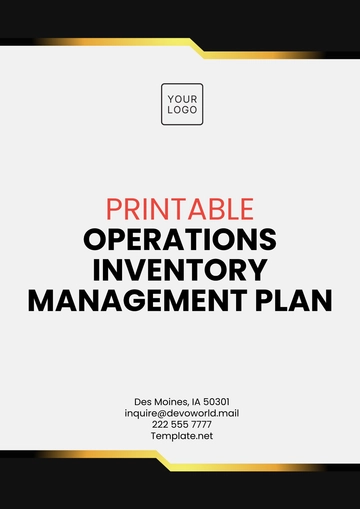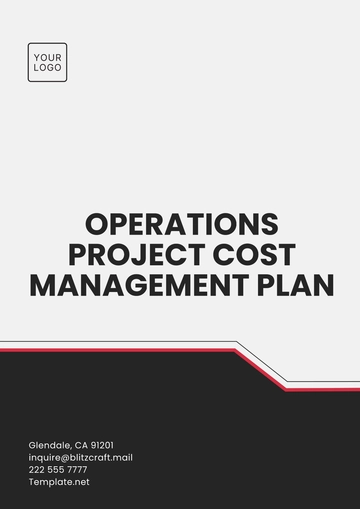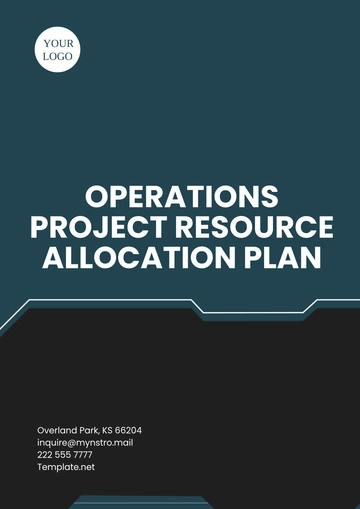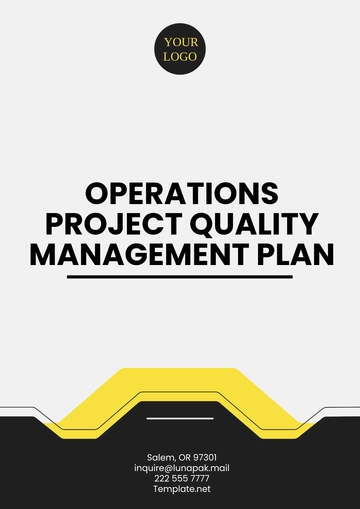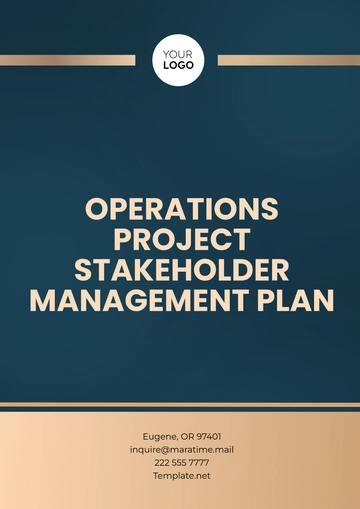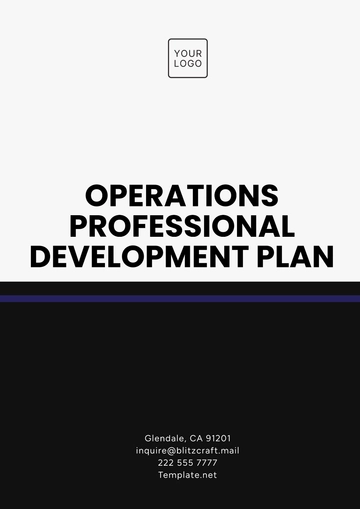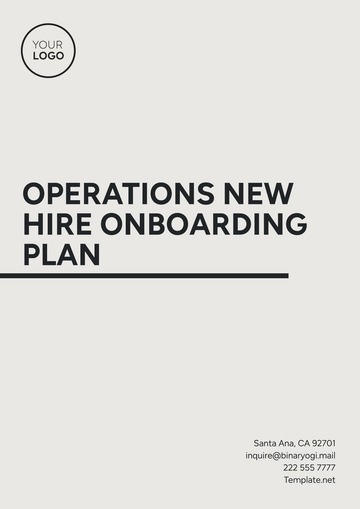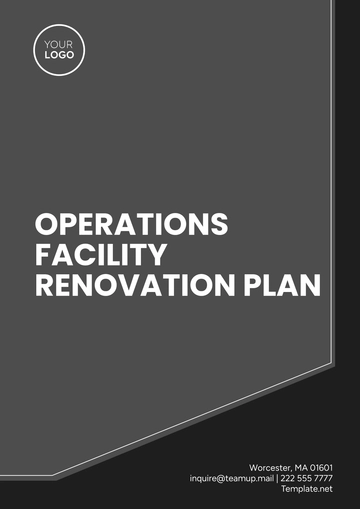Free Logistics Company Plan
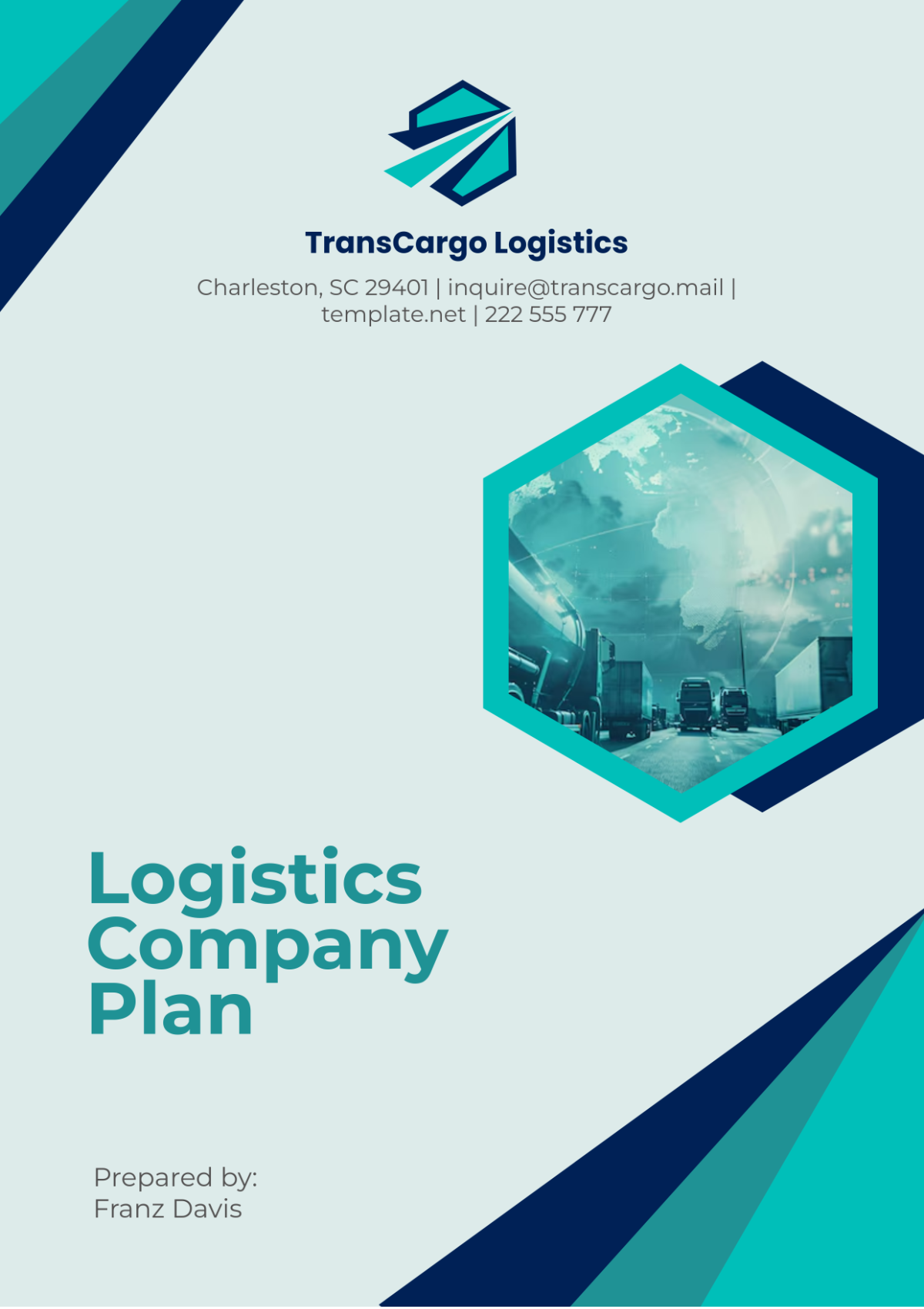
1. Executive Summary
[Your Company Name] is poised to redefine logistics in the year 2050, driven by a commitment to sustainability, speed, and technological innovation. As the global marketplace evolves, our company aims to provide top-tier logistics solutions that not only meet the demands of our clients but also contribute positively to the environment. This business plan outlines our comprehensive approach to capture a significant market share by offering streamlined, eco-friendly, and technology-driven logistics solutions that enhance operational efficiencies and improve customer satisfaction.
Our objective is to achieve an annual revenue of [$500 million] by the end of 2055, with a projected growth rate of [10%] annually. This ambitious goal will be underpinned by strategic investments in advanced technology, expansion of our service offerings, and a robust marketing strategy that focuses on customer engagement and brand loyalty. Furthermore, we will leverage emerging technologies, including AI, blockchain, and autonomous delivery vehicles, to maintain a competitive edge in the rapidly evolving logistics landscape. Our focus on customer service and technological integration will position [Your Company Name] as a leader in the logistics industry.
2. Company Overview
2.1 Mission Statement
Our mission at [Your Company Name] is to become the most trusted, sustainable, and innovative logistics provider in the market, making global and local delivery faster, easier, and more eco-friendly by 2050. We aim to build long-lasting relationships with our clients through transparency, reliability, and a deep understanding of their unique needs.
2.2 Vision Statement
By 2055, [Your Company Name] aims to lead the logistics industry in terms of customer satisfaction, innovation, and environmental responsibility. We envision a future where logistics not only supports economic growth but also fosters sustainable practices that benefit society as a whole.
2.3 Core Values
Sustainability: We are committed to a carbon-neutral footprint by 2060, striving to minimize our environmental impact through eco-friendly practices.
Customer-Centric: Our customers are at the heart of everything we do, and we prioritize their needs by offering tailored solutions and exceptional service.
Innovation: We embrace advanced technology and innovative processes to enhance our operations and provide our clients with cutting-edge logistics solutions.
Integrity: Conducting business with transparency and accountability is fundamental to our operations, fostering trust and long-term relationships with our stakeholders.
3. Market Analysis
3.1 Industry Trends
The logistics industry is experiencing profound changes, driven primarily by several key trends.
Rise of E-commerce: E-commerce is projected to grow by [300%] by 2050, as more consumers shift towards online shopping for convenience. This surge in e-commerce will significantly increase the demand for faster, more reliable logistics solutions to meet consumer expectations for quick delivery.
Sustainable Logistics: With growing awareness of climate change and environmental degradation, businesses are being pushed to adopt greener practices. Regulatory frameworks are becoming more stringent, compelling logistics companies to implement sustainable solutions in their operations.
Digital Transformation: The integration of advanced technologies such as AI, IoT, and blockchain is transforming logistics operations, enhancing efficiency, accuracy, and transparency. As businesses adapt to these technological advancements, the ability to track shipments and manage inventories in real-time has become a necessity.
3.2 Target Market Segments
Our target market consists of diverse segments, each requiring specialized logistics solutions.
E-commerce Businesses: We aim to serve small to large e-commerce enterprises that rely on consistent, rapid delivery solutions to maintain customer satisfaction and loyalty.
Manufacturers: Industrial manufacturers require bulk transportation services for raw materials and finished products, and we will tailor our offerings to meet these demands.
Retail Chains: Large retail chains with complex supply chain needs will benefit from our comprehensive logistics solutions, including warehousing, inventory management, and last-mile delivery.
By understanding the specific requirements of each segment, [Your Company Name] can tailor its services to better meet client needs and capitalize on market opportunities.
4. Business Model and Revenue Streams
4.1 Revenue Streams
The business model of [Your Company Name] is designed to diversify revenue sources while maintaining a focus on core logistics services.
Revenue Stream | Description | Projected Annual Revenue ($) |
|---|---|---|
Freight Transportation | Revenue from long-haul shipments and inter-city deliveries, targeting both B2B and B2C clients. | [$200 million] |
Last-Mile Delivery Services | Revenue generated from urban and last-mile deliveries for e-commerce clients, ensuring timely and efficient delivery to end consumers. | [$150 million] |
Warehousing and Fulfillment | Revenue from warehousing and inventory management services, offering flexible storage solutions for various clients. | [$100 million] |
Data and Analytics Services | Revenue from data-driven logistics solutions offered to clients, including supply chain optimization and predictive analytics. | [$50 million] |
4.2 Pricing Model
Our pricing strategy is designed to be competitive while ensuring profitability.
Freight Transportation: We will charge a competitive rate of [$0.75] per mile, with volume discounts available for contracts exceeding [$1 million]. This model allows us to attract large clients while still accommodating smaller businesses.
Last-Mile Delivery: Our last-mile delivery services will start from [$5] per package, with additional fees for expedited service options. This transparent pricing structure helps customers understand costs upfront.
Warehousing Services: Pricing for our warehousing services will be based on storage volume and duration, starting at [$0.10] per cubic foot daily. This flexible pricing approach allows clients to pay only for the space they need.
5. Service Offerings
5.1 Freight Transportation
[Your Company Name] provides comprehensive freight transportation services, encompassing both domestic and international shipping. We offer global freight transportation with real-time tracking, customizable packaging, and specialized handling options for fragile or perishable goods. Our transportation network spans over [300 cities] worldwide, ensuring timely and secure delivery. By investing in an advanced fleet of vehicles, including electric and autonomous options, we enhance our service reliability while reducing environmental impact.
5.2 Last-Mile Delivery
In an age where speed is paramount, our last-mile delivery service stands out. Through AI-based route optimization and the use of autonomous delivery vehicles, we provide rapid, reliable, and eco-friendly delivery solutions in urban areas. Our focus on efficiency not only improves delivery times but also enhances customer satisfaction. We are committed to making the last-mile delivery experience as seamless as possible, ensuring that packages arrive at their destinations in pristine condition.
5.3 Warehousing and Fulfillment
We offer state-of-the-art warehousing services that include inventory management, order processing, and packaging. Our warehouses utilize robotic systems and AI-driven analytics to optimize stock levels and reduce lead times. With real-time inventory tracking, clients can access up-to-date information about their products, allowing for better decision-making and planning. Additionally, our fulfillment services ensure that orders are processed quickly and accurately, contributing to an efficient supply chain.
5.4 Value-Added Services
We understand that logistics is not just about transportation; it's about providing a comprehensive solution. Our value-added services include:
Customized Packaging: We offer tailored packaging solutions for fragile, oversized, or temperature-sensitive items, ensuring they arrive safely and intact.
Data Analytics: We provide clients with insights derived from logistics data to optimize their supply chains based on delivery performance and customer behavior. This information helps clients make informed decisions.
Sustainability Consulting: We assist clients in adopting greener logistics practices, helping them reduce their environmental footprint while achieving their business goals.
6. Technology and Innovation
6.1 Autonomous Delivery Vehicles
By 2050, we aim to have [75%] of our delivery fleet composed of autonomous electric vehicles, significantly reducing delivery times and minimizing fuel expenses. These vehicles will be equipped with advanced navigation systems that utilize real-time traffic data to optimize routes. The deployment of autonomous vehicles will not only enhance efficiency but also improve safety on the roads.
6.2 AI and Machine Learning
We will leverage AI algorithms to drive route optimization, predictive maintenance, and supply-demand forecasting. These technologies will enhance our operational efficiency by [30%], allowing us to make smarter logistical decisions. By analyzing historical data, we can anticipate demand fluctuations and adjust our resources accordingly, ensuring that we meet customer needs without excess inventory.
6.3 Blockchain for Transparency
To enhance accountability and security in our operations, we will integrate blockchain technology for tracking shipments in real-time. This transparent system will provide clients with verified records of their shipments, enhancing trust and reliability. Furthermore, blockchain's decentralized nature ensures that data is secure and immutable, protecting both our company and our clients from fraud.
7. Operational Plan
7.1 Facility Layout and Location
To optimize our operations, we will strategically establish a network of facilities across key locations.
Facility Type | Location | Purpose |
|---|---|---|
Distribution Centers | [30] major cities | Centralized hubs for efficient routing and storage. |
Last-Mile Delivery Hubs | Urban centers | Facilitate rapid last-mile deliveries within metropolitan areas. |
Warehouses | [15] strategic locations | Stock management and fulfillment services tailored to regional demand. |
Each facility will be equipped with advanced technology, including robotics for sorting and handling, ensuring streamlined operations.
7.2 Logistics Process Flow
Our logistics process will follow a systematic approach to ensure efficiency and accuracy. The flow includes:
Order Placement: Customers place orders through our user-friendly platform, selecting delivery options and scheduling.
Inventory Management: Real-time inventory systems ensure product availability, and automated reordering processes are initiated when stock levels fall below thresholds.
Routing and Scheduling: Our AI-driven systems optimize delivery routes, taking into account real-time traffic data and weather conditions to minimize delays.
Delivery Execution: Packages are dispatched from the nearest facility, utilizing our fleet of delivery vehicles, including autonomous options for last-mile delivery.
Feedback and Improvement: Post-delivery surveys are conducted to gather customer feedback, allowing for continuous improvement in service delivery.
7.3 Supply Chain Management
A robust supply chain management strategy will be implemented, focusing on efficiency and sustainability. This strategy includes:
Supplier Relationships: Building strong partnerships with suppliers who share our commitment to sustainability will be essential. We will prioritize local suppliers to minimize transportation emissions.
Inventory Optimization: Using data analytics, we will minimize excess inventory while ensuring that stock levels meet customer demand. This strategy helps reduce waste and costs associated with unsold products.
8. Marketing and Sales Strategy
8.1 Brand Positioning
[Your Company Name] will position itself as a leader in sustainable logistics, emphasizing our commitment to environmental responsibility and innovation. Our branding will focus on our advanced technology, customer-centric service, and dedication to reducing carbon emissions in the logistics sector.
8.2 Target Audience
We will target businesses of all sizes, including small startups and large corporations, across various industries. Our marketing strategy will focus on industries with high logistics needs, such as retail, manufacturing, and e-commerce. By identifying the unique challenges faced by each industry, we can tailor our marketing messages to resonate with our target audience.
8.3 Marketing Channels
Our marketing strategy will encompass a multi-channel approach to reach our audience effectively. This includes:
Digital Marketing: Leveraging SEO, PPC, and social media marketing to drive online visibility and lead generation.
Content Marketing: Producing valuable content, including case studies, whitepapers, and blogs that highlight industry trends and logistics solutions. This approach establishes [Your Company Name] as a thought leader in the logistics space.
Trade Shows and Conferences: Participating in industry events to network with potential clients and showcase our innovative solutions. These interactions allow us to engage directly with our audience and build relationships.
8.4 Sales Strategy
Our sales team will be equipped with advanced CRM systems to track leads and customer interactions effectively. We will employ a consultative sales approach, focusing on understanding client needs and providing customized solutions. Regular training and updates on industry trends will empower our sales team to engage clients effectively and address their logistics challenges.
9. Human Resources Plan
9.1 Workforce Structure
[Your Company Name] will maintain a flat organizational structure to promote collaboration and agile decision-making. Our workforce will include:
Department | Key Roles | Headcount (Projected) |
|---|---|---|
Operations | Logistics Manager, Warehouse Staff | [200] |
Sales and Marketing | Sales Representatives, Digital Marketing Specialists | [100] |
Technology and Innovation | Data Analysts, IT Specialists | [75] |
Human Resources | HR Manager, Recruitment Specialists | [25] |
9.2 Recruitment and Training
To attract top talent, we will implement a comprehensive recruitment strategy focusing on skills, experience, and cultural fit. Our training programs will emphasize continuous learning, covering topics such as emerging logistics technologies, sustainability practices, and customer service excellence. We believe that investing in employee development fosters a motivated workforce that drives company success.
9.3 Employee Engagement and Retention
We aim to create a positive work environment that encourages collaboration, creativity, and innovation. Regular team-building activities, performance recognition programs, and open communication channels will foster employee engagement. By prioritizing work-life balance and offering competitive compensation packages, we will enhance employee retention and satisfaction.
10. Financial Plan
10.1 Startup Costs
The estimated startup costs for [Your Company Name] are projected to be approximately [$10 million], which will be allocated across various operational areas.
Expense Category | Estimated Cost ($) |
|---|---|
Facility Setup | [$4 million] |
Technology Investments | [$3 million] |
Marketing and Branding | [$1 million] |
Human Resources | [$2 million] |
10.2 Revenue Projections
Our revenue projections over the next five years reflect our commitment to growth and market penetration.
Year | Projected Revenue ($) | Projected Expenses ($) | Projected Profit ($) |
|---|---|---|---|
2050 | [$50 million] | [$40 million] | [$10 million] |
2051 | [$75 million] | [$55 million] | [$20 million] |
2052 | [$100 million] | [$70 million] | [$30 million] |
2053 | [$150 million] | [$90 million] | [$60 million] |
2054 | [$200 million] | [$120 million] | [$80 million] |
10.3 Funding Strategy
To finance our growth, we will pursue a combination of equity investments, bank loans, and potential government grants for green initiatives. We anticipate raising [$5 million] through private equity investors who share our vision for sustainable logistics. Additionally, we will seek funding from local banks, taking advantage of favorable loan terms for environmentally responsible businesses.
11. Risk Management and Mitigation
11.1 Identifying Risks
Potential risks that [Your Company Name] may face include:
Economic Fluctuations: Changes in the economic landscape, such as recessions or shifts in consumer spending, can impact our revenue.
Supply Chain Disruptions: Natural disasters or geopolitical events may disrupt our supply chain, affecting delivery schedules.
Technological Challenges: Rapid technological changes require constant adaptation and investment to stay competitive.
11.2 Mitigation Strategies
To mitigate these risks, we will:
Diversify Client Base: By serving a variety of industries, we can reduce dependence on any single market segment.
Establish Contingency Plans: Developing robust contingency plans will help us respond quickly to disruptions in our supply chain.
Invest in Technology: Continuous investment in the latest technologies will ensure we remain competitive and can adapt to market changes swiftly.
12. Sustainability and Corporate Responsibility
12.1 Environmental Goals
As part of our commitment to sustainability, we have established ambitious environmental goals.
Carbon-Neutral Target: We aim to achieve a carbon-neutral status by 2060, requiring us to implement energy-efficient practices and invest in carbon offset projects. This proactive approach will not only help us meet regulatory requirements but also enhance our brand reputation.
Green Fleet: Our transition to [100%] electric and autonomous vehicles by 2065 will significantly reduce greenhouse gas emissions. These vehicles will be equipped with smart technology to optimize routes and improve energy efficiency.
12.2 Social Responsibility
We take our social responsibility seriously by ensuring that our employees receive fair wages, safe working conditions, and opportunities for professional growth. Our corporate social responsibility (CSR) programs focus on community engagement, supporting underprivileged communities through donations and job creation. We partner with local organizations to provide training and employment opportunities, empowering individuals to build better futures.
12.3 Governance
We adhere to high ethical standards and transparent governance practices. Our governance structure is designed to promote accountability and responsible business conduct. The board includes members from diverse backgrounds, ensuring inclusivity and varied perspectives in decision-making. We conduct regular audits and maintain open lines of communication with stakeholders, fostering trust and collaboration.
13. Appendix
Table A: Projected Environmental Impact Reductions (2050-2060)
Year | Estimated CO2 Emissions Reduction (%) | Percentage of Electric Fleet (%) |
|---|---|---|
2050 | [20%] | [25%] |
2051 | [30%] | [40%] |
2052 | [50%] | [60%] |
2053 | [70%] | [80%] |
2054 | [85%] | [90%] |
2055 | [90%] | [100%] |
Table B: Customer Growth Analysis
Year | New Customers Acquired | Total Customers | Customer Retention Rate (%) |
|---|---|---|---|
2050 | [1,000] | [5,000] | [80%] |
2051 | [2,000] | [7,000] | [82%] |
2052 | [3,000] | [10,000] | [85%] |
2053 | [5,000] | [15,000] | [87%] |
2054 | [7,000] | [20,000] | [90%] |
Contact Information
[Your Company Name]
[Your Company Address]
[Your Company Email]
[Your Company Number]
- 100% Customizable, free editor
- Access 1 Million+ Templates, photo’s & graphics
- Download or share as a template
- Click and replace photos, graphics, text, backgrounds
- Resize, crop, AI write & more
- Access advanced editor
Streamline operations with the Logistics Company Plan Template from Template.net. This editable and customizable template covers goals, strategies, and action steps. Use our Ai Editor Tool for a clear, focused logistics plan.
You may also like
- Finance Plan
- Construction Plan
- Sales Plan
- Development Plan
- Career Plan
- Budget Plan
- HR Plan
- Education Plan
- Transition Plan
- Work Plan
- Training Plan
- Communication Plan
- Operation Plan
- Health And Safety Plan
- Strategy Plan
- Professional Development Plan
- Advertising Plan
- Risk Management Plan
- Restaurant Plan
- School Plan
- Nursing Home Patient Care Plan
- Nursing Care Plan
- Plan Event
- Startup Plan
- Social Media Plan
- Staffing Plan
- Annual Plan
- Content Plan
- Payment Plan
- Implementation Plan
- Hotel Plan
- Workout Plan
- Accounting Plan
- Campaign Plan
- Essay Plan
- 30 60 90 Day Plan
- Research Plan
- Recruitment Plan
- 90 Day Plan
- Quarterly Plan
- Emergency Plan
- 5 Year Plan
- Gym Plan
- Personal Plan
- IT and Software Plan
- Treatment Plan
- Real Estate Plan
- Law Firm Plan
- Healthcare Plan
- Improvement Plan
- Media Plan
- 5 Year Business Plan
- Learning Plan
- Marketing Campaign Plan
- Travel Agency Plan
- Cleaning Services Plan
- Interior Design Plan
- Performance Plan
- PR Plan
- Birth Plan
- Life Plan
- SEO Plan
- Disaster Recovery Plan
- Continuity Plan
- Launch Plan
- Legal Plan
- Behavior Plan
- Performance Improvement Plan
- Salon Plan
- Security Plan
- Security Management Plan
- Employee Development Plan
- Quality Plan
- Service Improvement Plan
- Growth Plan
- Incident Response Plan
- Basketball Plan
- Emergency Action Plan
- Product Launch Plan
- Spa Plan
- Employee Training Plan
- Data Analysis Plan
- Employee Action Plan
- Territory Plan
- Audit Plan
- Classroom Plan
- Activity Plan
- Parenting Plan
- Care Plan
- Project Execution Plan
- Exercise Plan
- Internship Plan
- Software Development Plan
- Continuous Improvement Plan
- Leave Plan
- 90 Day Sales Plan
- Advertising Agency Plan
- Employee Transition Plan
- Smart Action Plan
- Workplace Safety Plan
- Behavior Change Plan
- Contingency Plan
- Continuity of Operations Plan
- Health Plan
- Quality Control Plan
- Self Plan
- Sports Development Plan
- Change Management Plan
- Ecommerce Plan
- Personal Financial Plan
- Process Improvement Plan
- 30-60-90 Day Sales Plan
- Crisis Management Plan
- Engagement Plan
- Execution Plan
- Pandemic Plan
- Quality Assurance Plan
- Service Continuity Plan
- Agile Project Plan
- Fundraising Plan
- Job Transition Plan
- Asset Maintenance Plan
- Maintenance Plan
- Software Test Plan
- Staff Training and Development Plan
- 3 Year Plan
- Brand Activation Plan
- Release Plan
- Resource Plan
- Risk Mitigation Plan
- Teacher Plan
- 30 60 90 Day Plan for New Manager
- Food Safety Plan
- Food Truck Plan
- Hiring Plan
- Quality Management Plan
- Wellness Plan
- Behavior Intervention Plan
- Bonus Plan
- Investment Plan
- Maternity Leave Plan
- Pandemic Response Plan
- Succession Planning
- Coaching Plan
- Configuration Management Plan
- Remote Work Plan
- Self Care Plan
- Teaching Plan
- 100-Day Plan
- HACCP Plan
- Student Plan
- Sustainability Plan
- 30 60 90 Day Plan for Interview
- Access Plan
- Site Specific Safety Plan
